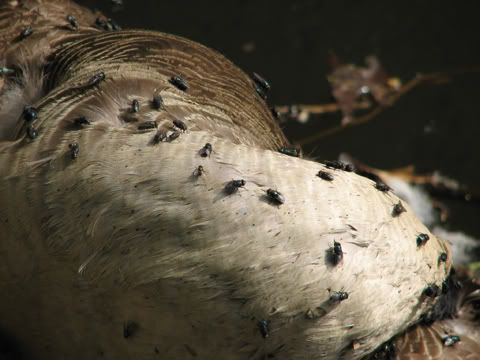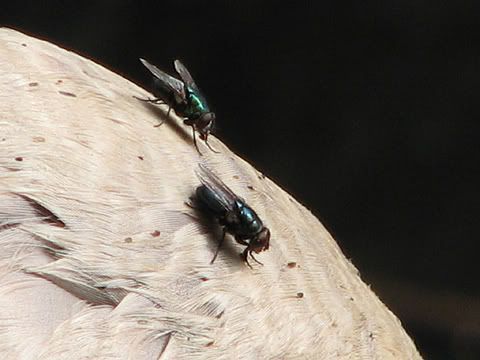365 Urban Species. #132: Green Bottle Fly

Photos by cottonmanifesto
Urban species #132: Green bottle fly Phaenicia sericata
Despite yourself, you must admit this is a beautiful animal. Feeding on a variety of organic wastes, and depositing its eggs on the carcasses of animals, it does not live what we would call a lovely life. But blow flies, of which the green bottle fly is but one of many, are the front line on the important job of disposing of corpses. Their ability to detect the recently dead is so acute, that they are invariably the first animals to visit. Forensic entomologists have noted these flies appearing within two minutes of the appearance of a carcass, in experiments. These scientists use blow flies, who have very specific temperature needs for their eggs and larvae, to precisely determine time of death in investigations.
The average city dweller is most likely to notice green bottle flies on a ripe bag of garbage, or a pile of dog waste. In cities with poor sanitation, green bottle flies could potentially be a serious disease vector. The problem of myiasis, mentioned earlier in this series is much more of a risk with this species than with, for example, the little house fly. But the fact that this fly's larvae eats dead flesh has been used medically (disturbing image behind cut): the maggots are applied to necrotic wounds, and feed on the dead tissue, leaving living tissue alone.
Identification by badnoodles. (hey, noodles, I assume Phaenicia sericata and Lucilia sericata are synonyms?)

Green bottle flies and others on Canada goose carcass.
